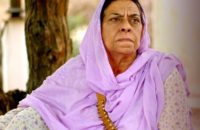Mala, Helen, Nargis and Nilofer may sound like the names of yesteryear Bollywood actors, but they are, in fact, lethal cyclones that have brought violent winds, heavy rains and wreaked destruction. As Cyclone Fani pounded the Odisha coast on Friday, the name, which was suggested by Bangladesh, also evoked curiosity.
Mritunjay Mohapatra, the additional director general of the India Meteorological Department (IMD), said Fani, pronounced as ‘Foni’, means a snake’s hood. But how are cyclones named?
The World Meteorological Organisation/Economic and Social Commission for Asia and the Pacific Panel on Tropical Cyclones, at its
27th session held in 2000 in Muscat, Oman, agreed to assign names to the tropical cyclones in the Bay of Bengal and Arabian Sea.
The naming of tropical cyclones over north Indian Ocean commenced from September 2004. The eight countries along the Bay of Bengal and Arabian Sea suggest names that are sequentially listed. The nations suggest names alphabetically — Bangladesh, India, Maldives, Myanmar, Oman, Pakistan, Sri Lanka and Thailand. The Regional Specialised Meteorological Centre (RSMC) based here gives a tropical cyclone an identification from the names list.
So, for instance, Bangladesh suggested ‘Onil’ the first on the list. Onil originated in Arabian Sea, off the Gujarat coast between September to October 2004. It made landfall in the state, but impacted both India and Pakistan. Cyclone Phetai, suggested by Thailand, originated in the Bay of Bengal and made landfall in Andhra Pradesh, ravaging the coastal districts in December last year. The next cyclone, whenever it originates, will be named ‘Vayu’, suggested by India. Of the 64 names suggested by these eight countries, 57 have been utilised.
Some of the names suggested by India are Agni, Jali, Bijli, Akash, while Mala, Helen and Nilofar were suggested by Sri Lanka, Bangladesh and Pakistan respectively. These lists are used sequentially and they are not rotated every few years, unlike the Atlantic and Eastern Pacific lists.
“A storm causes so much death and destruction that its name is considered for retirement and hence is not used repeatedly. If the public wants to suggest the name of a cyclone to be included in the list, the proposed name must meet some fundamental criteria,” a circular on naming the cyclones over the North Indian Ocean said.
“The name should be short and readily understood when broadcast. Further, the names must not be culturally sensitive and must not convey some unintended and potentially inflammatory meaning,” it added. The name can be communicated to the director general of the IMD.




 Canada Uber Driver Tells Passenger He Would Have ‘Kidnapped Her If It Was Pakistan’
Canada Uber Driver Tells Passenger He Would Have ‘Kidnapped Her If It Was Pakistan’






























